
©Woolly Thoughts 2020
PENROSE TABLE
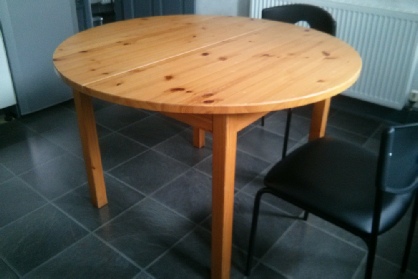
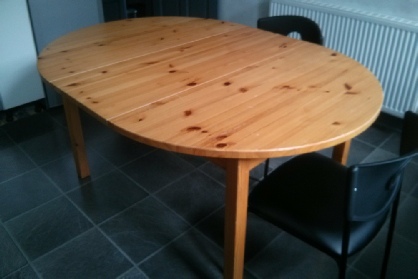
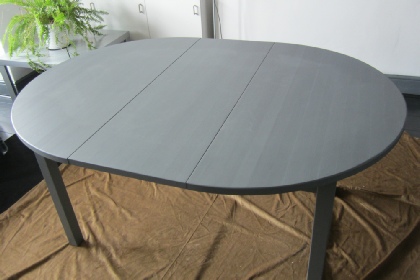
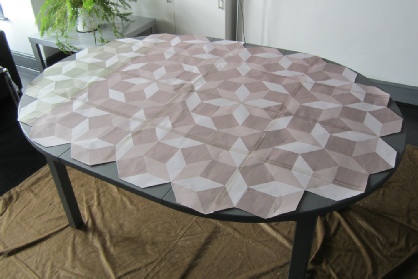
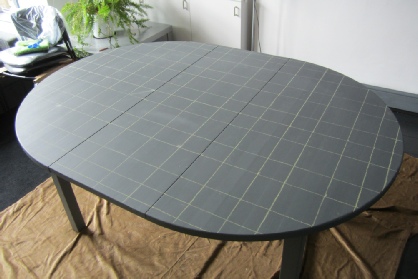
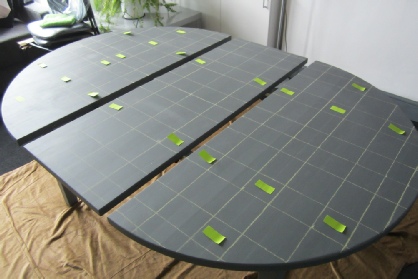
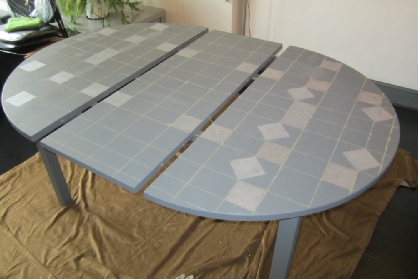
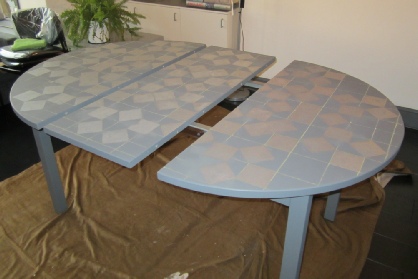
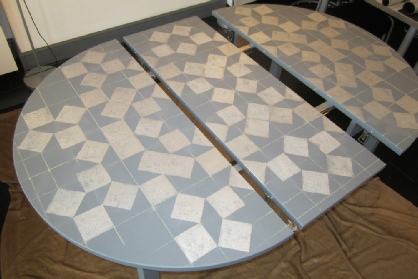
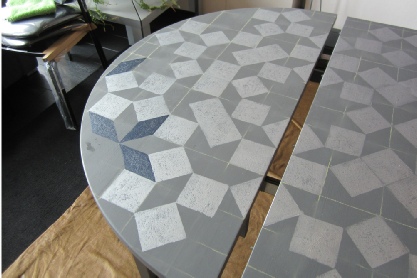
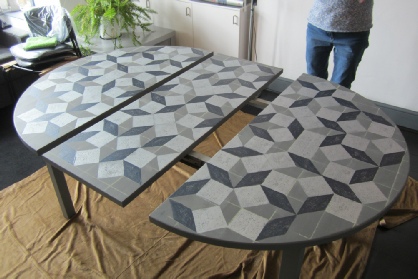
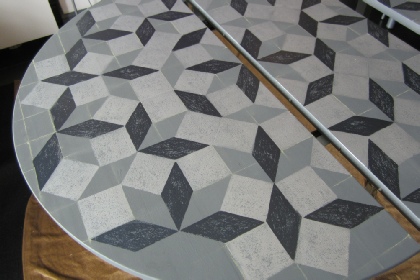
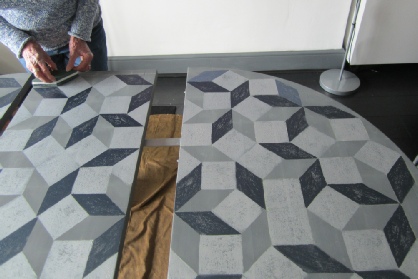
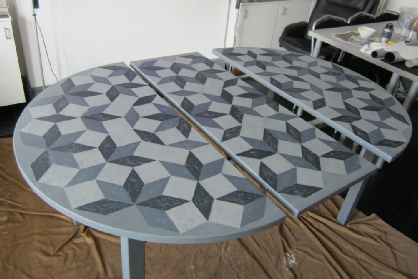
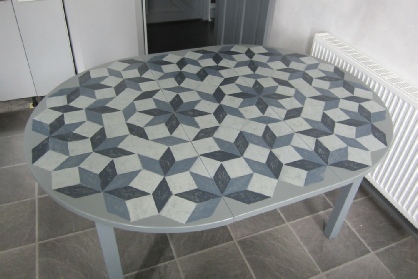
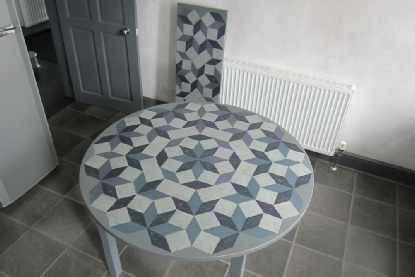
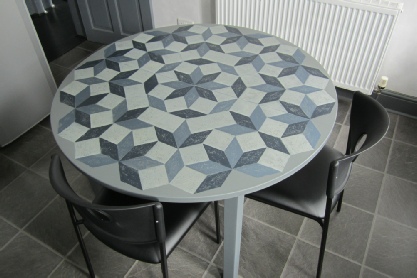
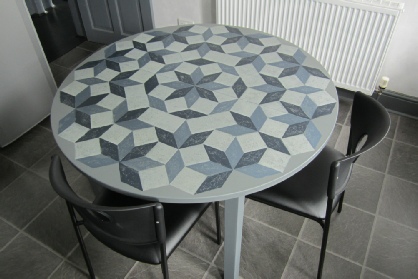

From this ..
.. to this
When we refurbished our kitchen, in June 2016, the existing glass table seemed out of place. We searched for something more appropriate but without success. In the cellar we had a very old formica-
It measures 115 cm across the diameter of the circle with a 41 cm centre leaf to make it into an oval.
Our favourite circular design is Penrose so it seemed the obvious choice. It needed an extra section for the central inset. The visualisation and calculations were tricky to make sure the extra piece fitted exactly and to make the design match with, and without, the centre.
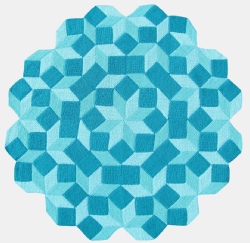
We sanded the table and painted it grey for the background. We then printed the design at full-
It is easy to get confused with a design like this so we marked it out with chalk. The grid shows the placement for some of the ‘straight’ squares and some of the ‘pointed’ squares. The squares are all the same size but the vital measurement of the pointed squares is root 2 times the side of the straight square,
We used post-
The shapes were block printed with acrylic paints using shapes cut from a garden kneeler. This gave a textured look to the prints rather than a solid colour.
When the squares were all in place it was relatively easy to position the first set of rhombuses between them.
The second set of rhombuses filled the remaining spaces.
Many coats of matt varnish were applied to protect the surface.
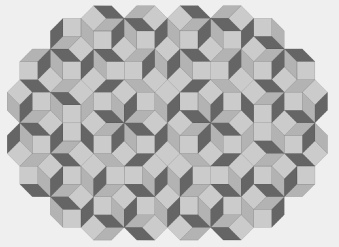
Note: This tiling was discovered by Robert Ammann. Our design got its name because it was sent to us by Sir Roger Penrose
| Introduction |
| Photos |
| Penrose Table |
| Needle Gauges |
| Tribute |
| Little Yellow Duck Project |
| Outside our house |
| Inside our house |
| New Photos 2011 |
| Dialysis photos |
| Other tributes |
| Maths & Puzzles |
| Puppets |
| Sum Wear |
| Toilet Roll Covers |
| Jewellery Dolls |
| Cushy Numbers |
| Pillows of Wisdom |
| Flexagon Cushions |
| Other Cushions |
| Spirals |
| Sweaters - Introduction |
| Hats |
| Scarves & Shawls |
| Crochet Möbius |
| Mathemagical Mittens |
| Mathematical Slippers |
| Simply Circles |
| Roman Mosaics |
| Woolly Thoughts Sweaters |
| Second Thoughts Sweaters |
| More Second Thoughts Sweaters |
| Waistcoats |
| Baby Jackets |
| Irrationals |
| Optical Illusions |
| Hyperbolic Hats |
| Octohats |
| Klein Bottle Hats |
| Mufflermatics |
| The Imitation Game |
| To Bias Or Not To Bias |
| Mostly Holes |
| Enwrapture |
| Maelstrom |
| Windmills Poncho |
| Cats |
| Dogs |
| Sheep |
| Eggsentricities |
| On a Roll |
| Snakes |
| The Sequel |
| Cushion Conglomeration Caper |
| Where to find us |
| Workshops |
| Afghans for schools |
| Group projects |
| Illusion Knitting Tutorials |
| Photos & Comments |
| Want a workshop? |
| South Tynedale |
| Tregarth |
| St Alban's |
| West Jesmond |
| St Oswald's |
| Beckermet |
| Earth School |
| Other schools |
| Cheshire WI |
| East Yorkshire WI |
| Beds Alzheimers Soc |